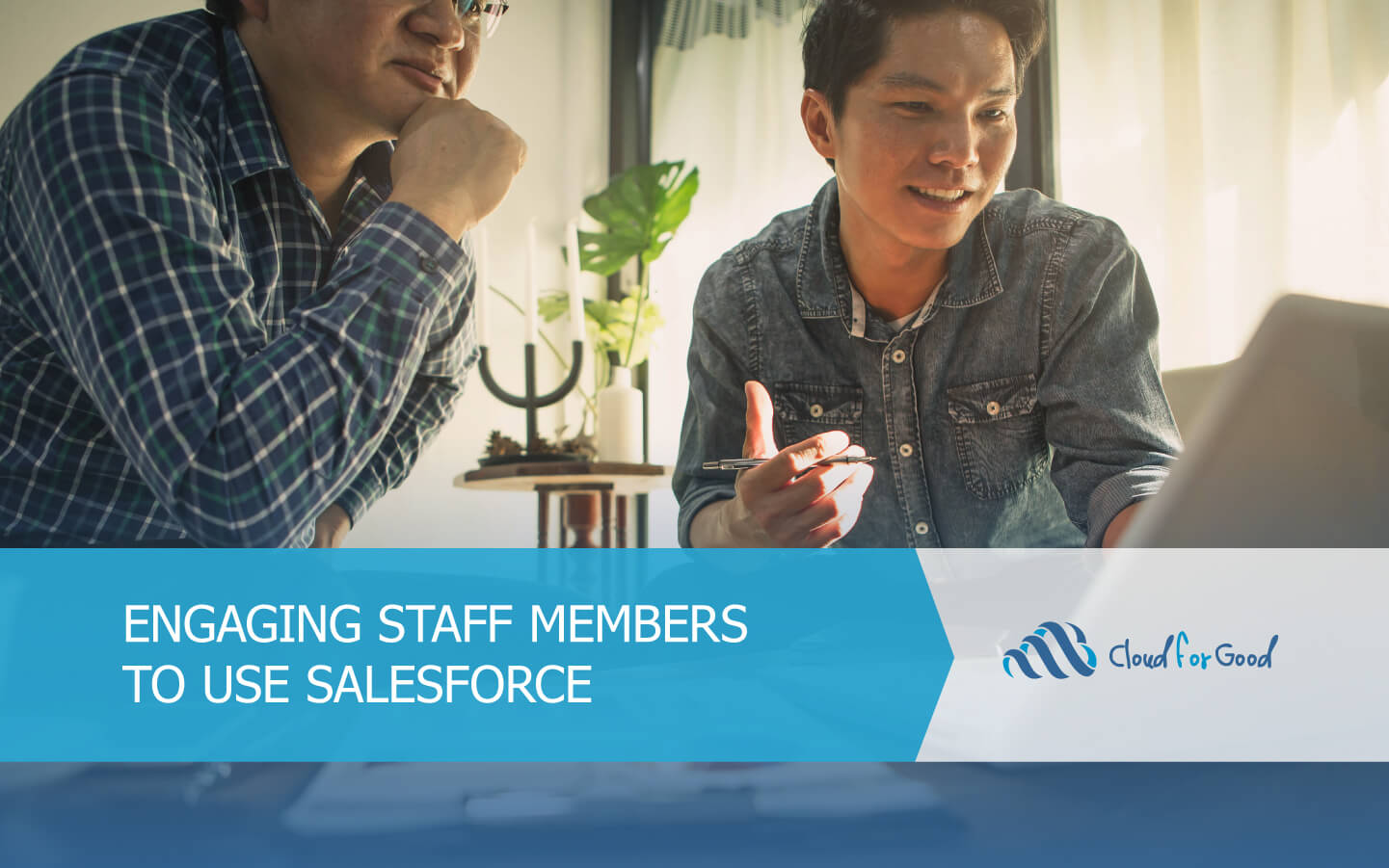Salesforce is amazing. It’s flexible, customizable, it makes life easier and it’s pretty. You know it. I know it. You’re excited to get going, to jump into discovery and get this project off the ground. Images of this bright and shiny system making life easier for everyone are floating around in your head. Everyone loves it, it’s solving problems left and right and the benefits are staggering.
But perhaps not everyone feels this way. You may know it from the beginning or you may find out later on, but, as in any system, you get what you put in. So getting all users on board is a big piece of the puzzle to make sure you get the most out of your investment. If users aren’t engaged, don’t see the benefits or are left out of the process, they won’t understand their new roles and they won’t accept it. Here are a couple of ideas for pre, during and post implementation.
Before you start your discovery process
- Let your users know that you are switching systems. Giving users lots of time to get used to the idea and get excited is going to make the transition, when it comes, easier. Giving them clear reasons why the current system isn’t working and why Salesforce is going to solve those issues is going to give them insight into why the switch is happening in the first place.
- Although not all users can be part of the discovery process, give them some time to provide feedback of what the biggest pain points are in their current system. If these can be alieviated in Salesforce, they may be considered as part of the project. You may have just converted the biggest critic by listening to their needs and providing a solution.
During the implementation
- Depending on the size of your organization, you may want to consider getting a Salesforce subject matter expert involved either earlier on or during the User Acceptance Testing (UAT) phase. They will have access to Salesforce early and will get excited about it. They will be part of the testing team and will provide valuable feedback that others may have missed. They also play the added role of being an expert resource during and after go-live, providing training and knowledge to other users who are just being introduced to Salesforce.
- Keep the communication open, letting your users know the progress of the project and key dates. If a database is getting frozen, give users plenty of time to get their data in. If a system is being deprecated, don’t leave anyone out in the cold. Communicate early and often. Details of the project may not be necessary, but if consistent, energized, excited messaging is sent out, then no one can claim ignorance.
After the implementation
- Ensure that user adoption is happening with reporting and dashboards. A couple of good ones can be found here.
- If you have a big team, consider making adoption a game with prizes. Maybe a leader board of users who create the most records, with a prize awarded after the first 30 days.
- Don’t stop at go-live. Training should continue until everyone is comfortable with the system. It’s common for some to grasp Salesforce quickly and others to take more time. Continuing to emphasize the benefits of the switch during the transition time will give the users visibility into why it’s good for them to adopt the new system. Continue to follow up with one on one trainings to make sure that everyone understands how to use the system.
Well after the implementation
- Salesforce is a giant. As we might strive for perfection when implementing it, it’s an ever-evolving process. Your processes will change and so Salesforce will need to change. A new feature is released that you’ve been waiting for and now your process changes again. Maintaining the same good will toward Salesforce in your organization is a lesson in communication with your users. Implementing changes without letting end users know is a recipe for ill will and adoption levels will drop.
The biggest advice I can give is to put yourself in each and every user’s shoes. What would make you happier to switch to a new system, keeping in mind that there are lots of different ways that people are motivated? If a user is struggling, understanding why is going to be a big part of being successful in this endeavor.
And, as always, Cloud for Good is here to help, with training, adoption ideas, system changes and reporting to give you insight into the success of your launch.
You may also be interested in:





